Cover Up by Frank Tapson
This blog post contains Amazon affiliate links. As an Amazon Associate, I earn a small commission from qualifying purchases.
I really hope you guys aren’t growing tired of reading blog posts about Frank Tapson’s awesome activities because you’re about to read another one. Previously, I’ve shared about How Far Can YOU Climb?, Manifest, and Skittles. Frank also designed the number line poster I have at the front of my classroom.
I love to keep his activities on hand for when a class finishes unexpectedly early. That was exactly the case when we played Cover Up.
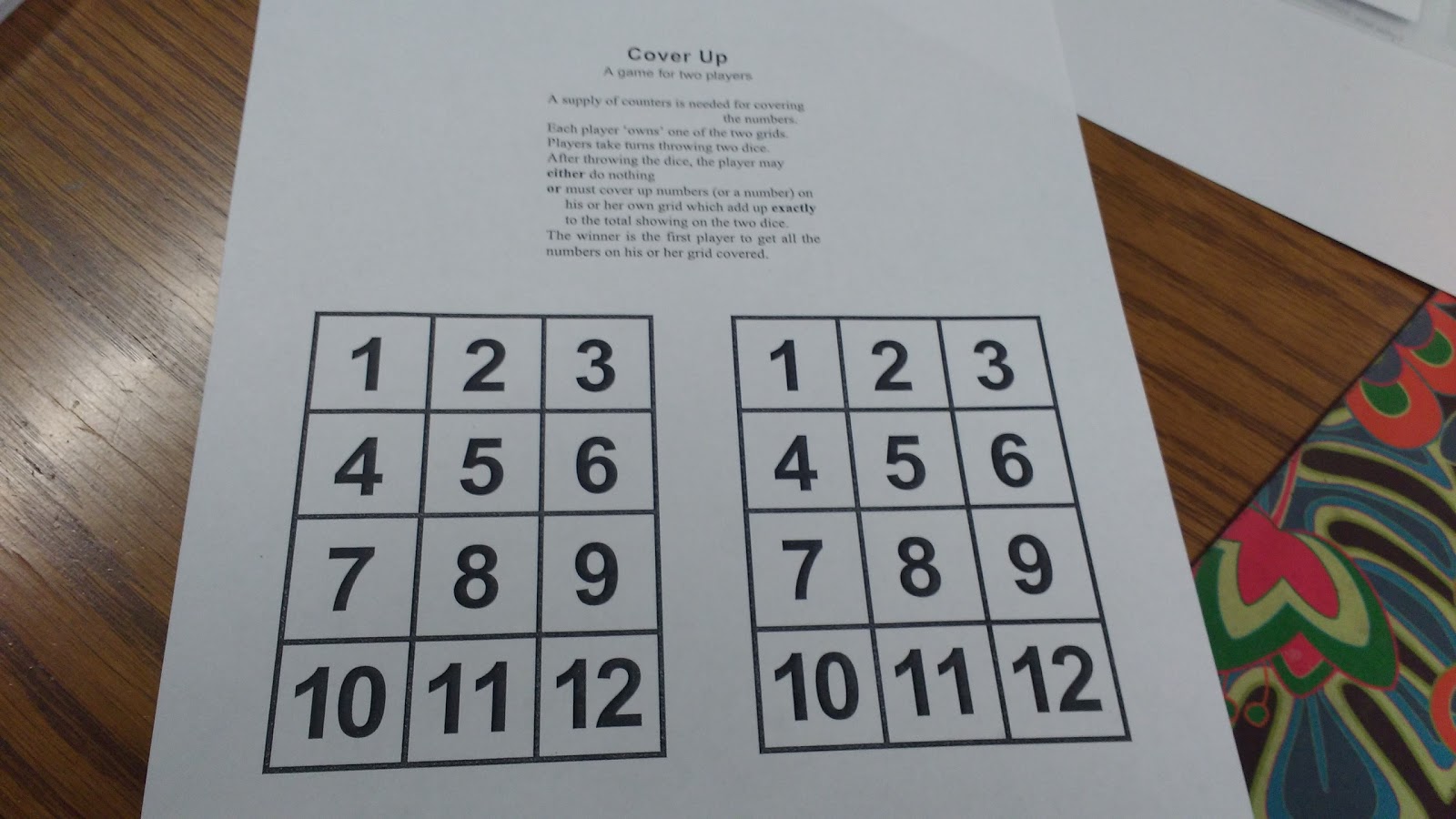
In order to play, students need to be in pairs. Each pair needs one game sheet, a handful of playing pieces (some of my pairs used bingo chips while others used two colored counters), and a pair of dice.
Here are the rules:
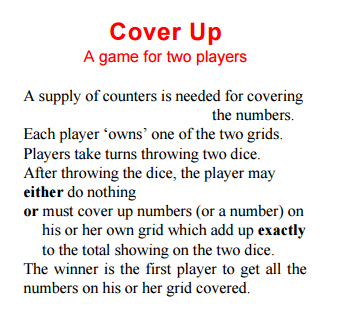
Like with previous activities I have tried, many of my students did not read and comprehend the rules fully before starting. Next time, I will play a few sample turns under my document camera!
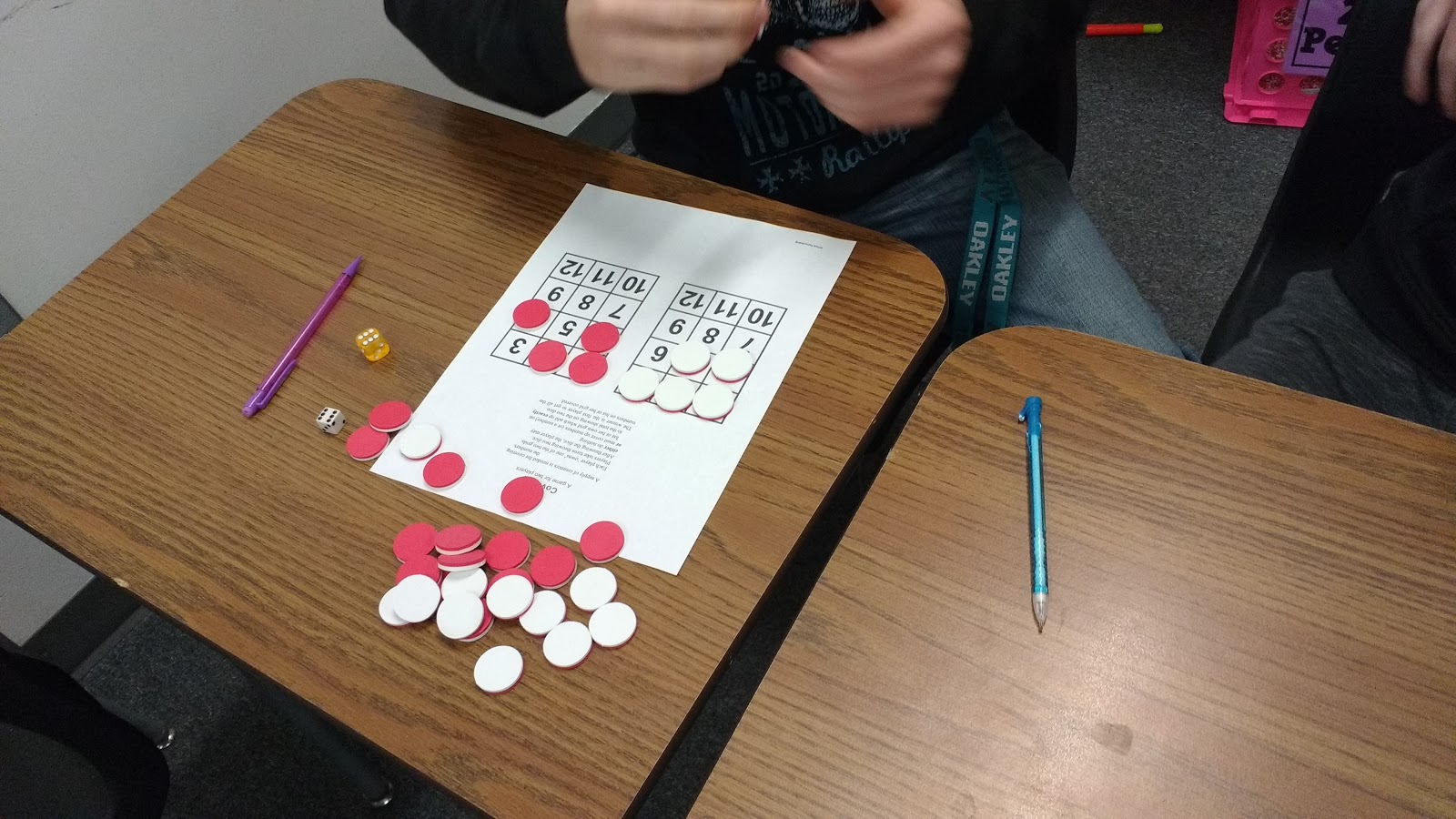
Once my students caught on, they had a lot of fun with it. I heard lots of strategy talk as I walked around the room taking “action shots.”
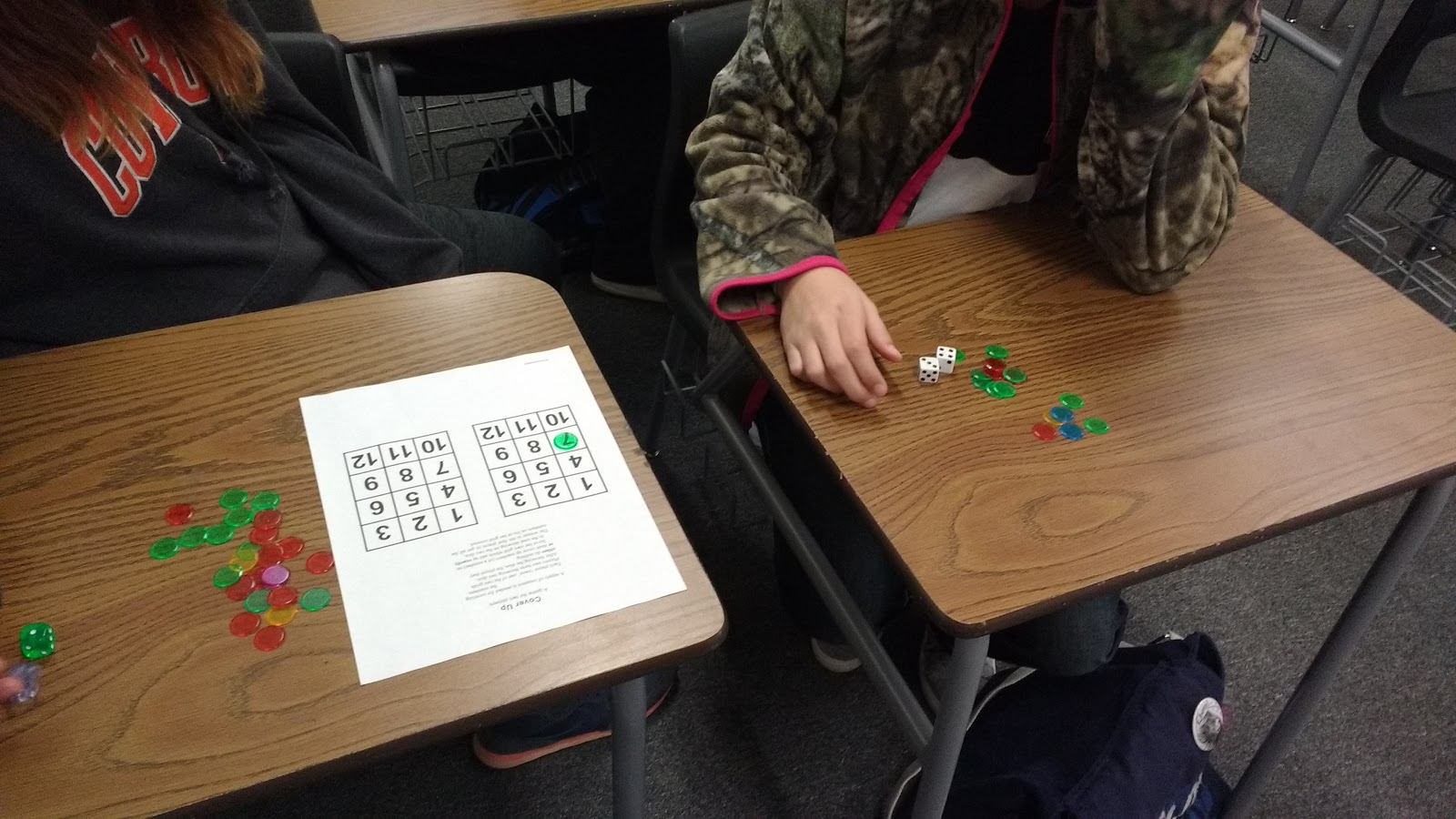
This would be a great activity to use as an introduction to a probability unit. Which of the spaces on the game board are going to be hardest to fill? Which will be easiest? How should that impact my strategy?
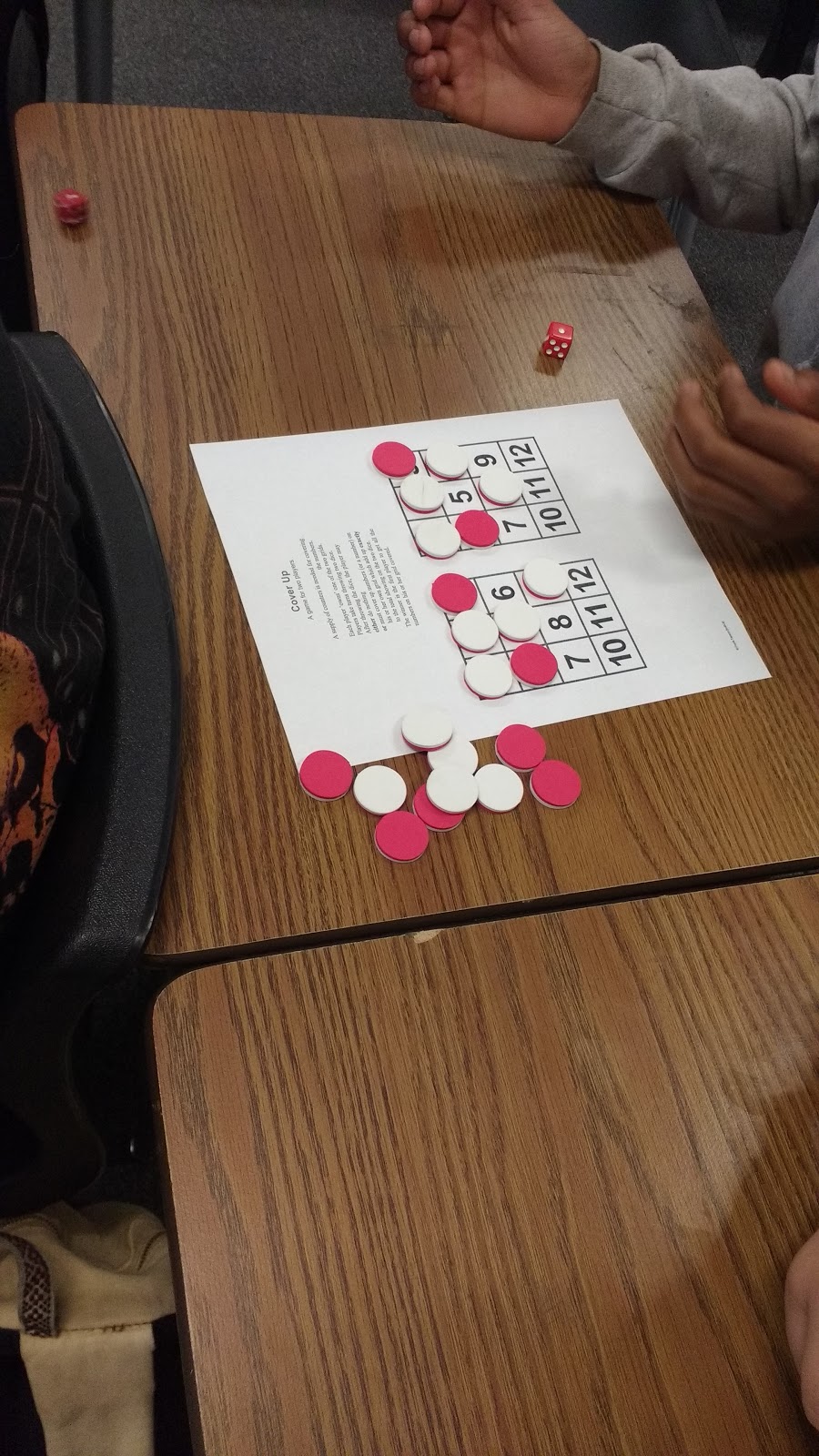
Here are a few more of the action shots I took:
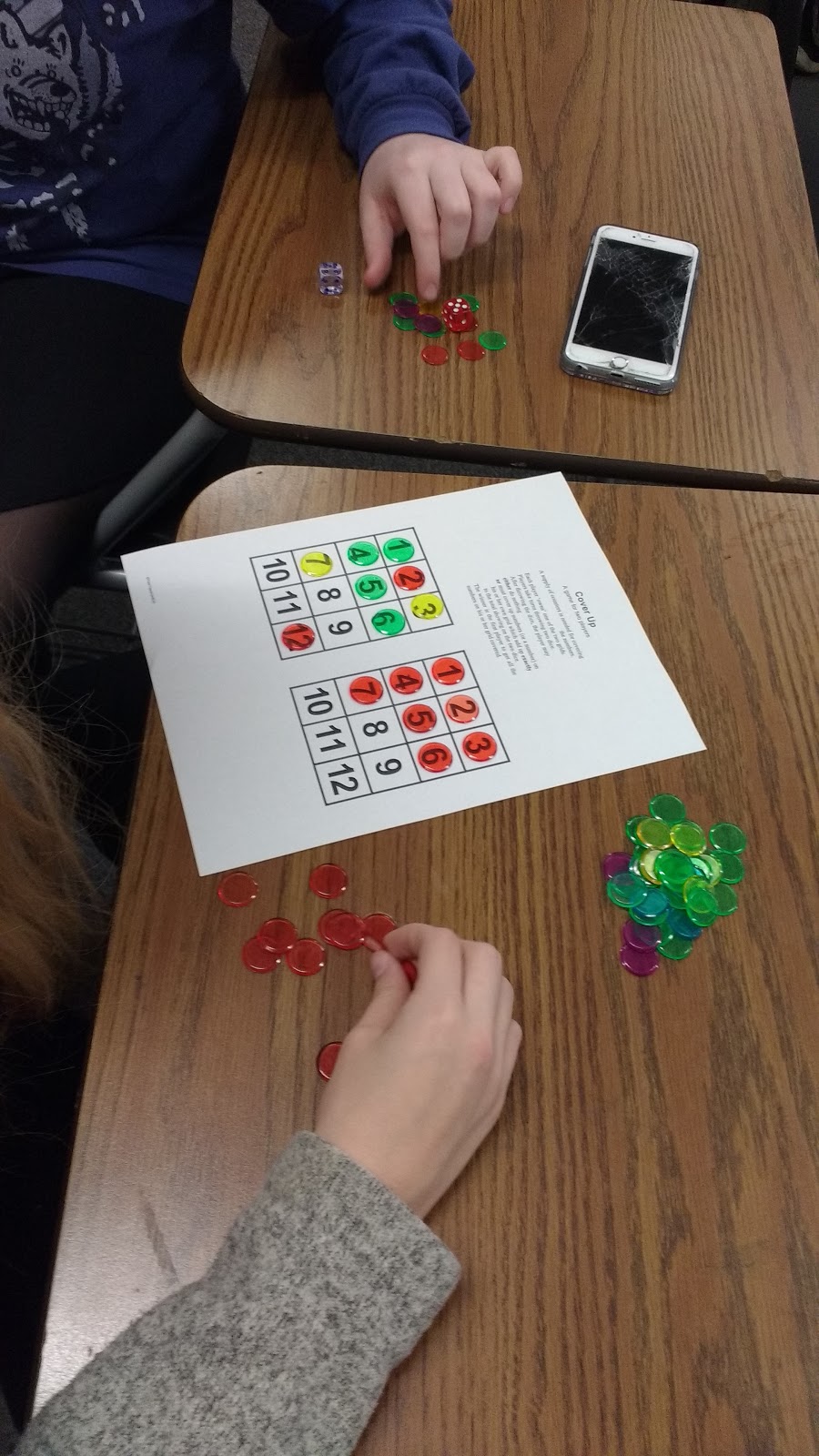
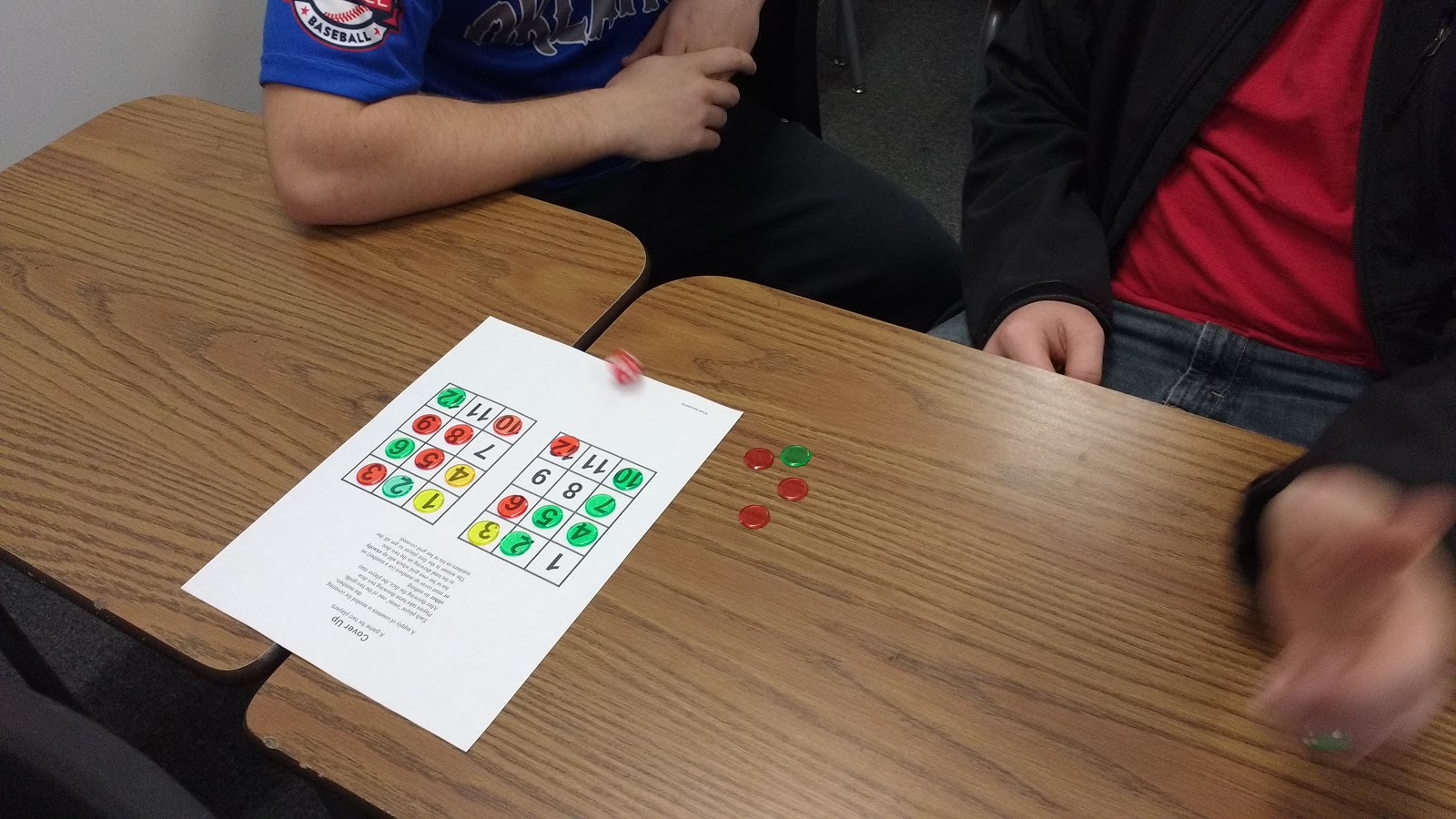
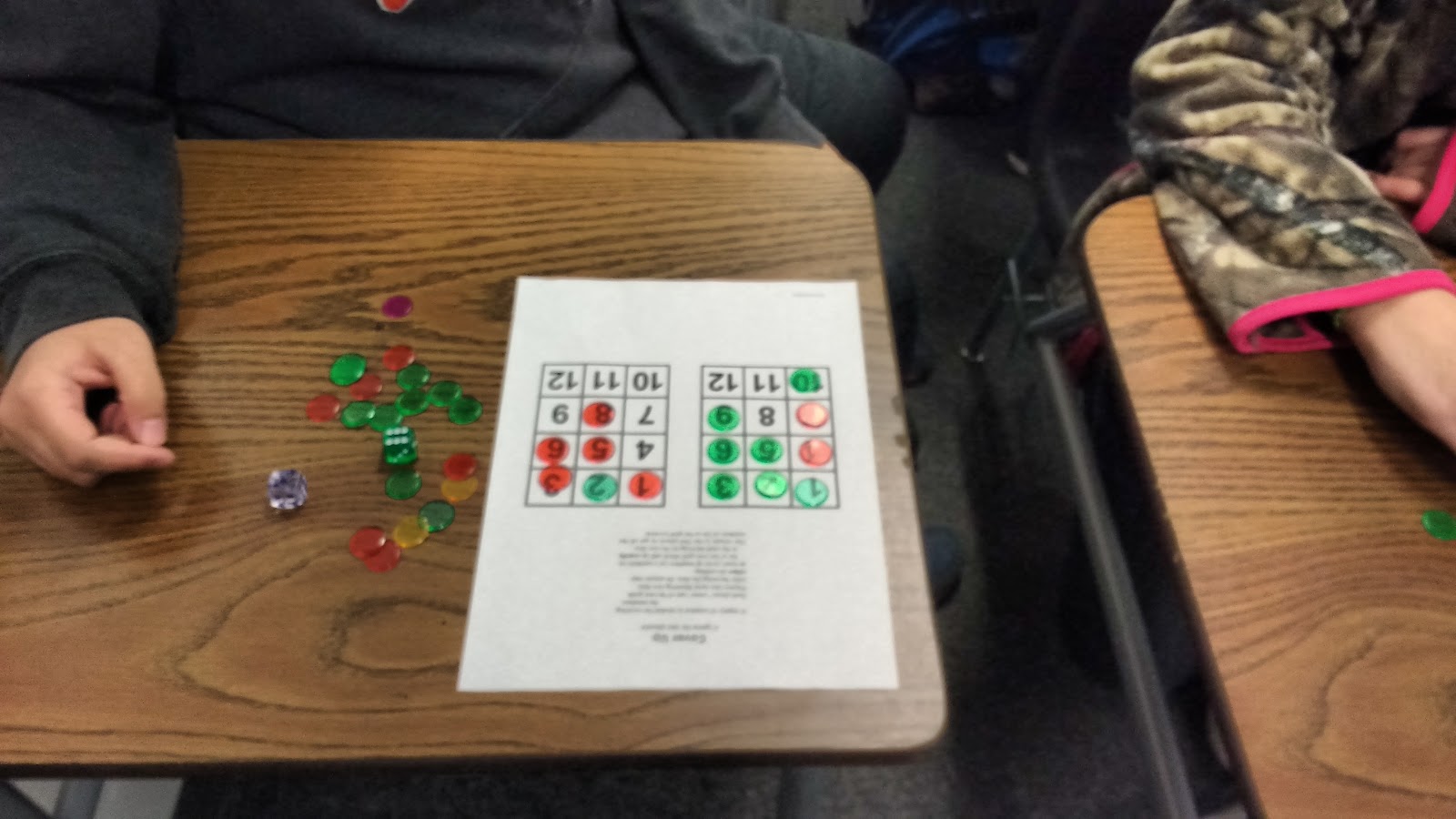

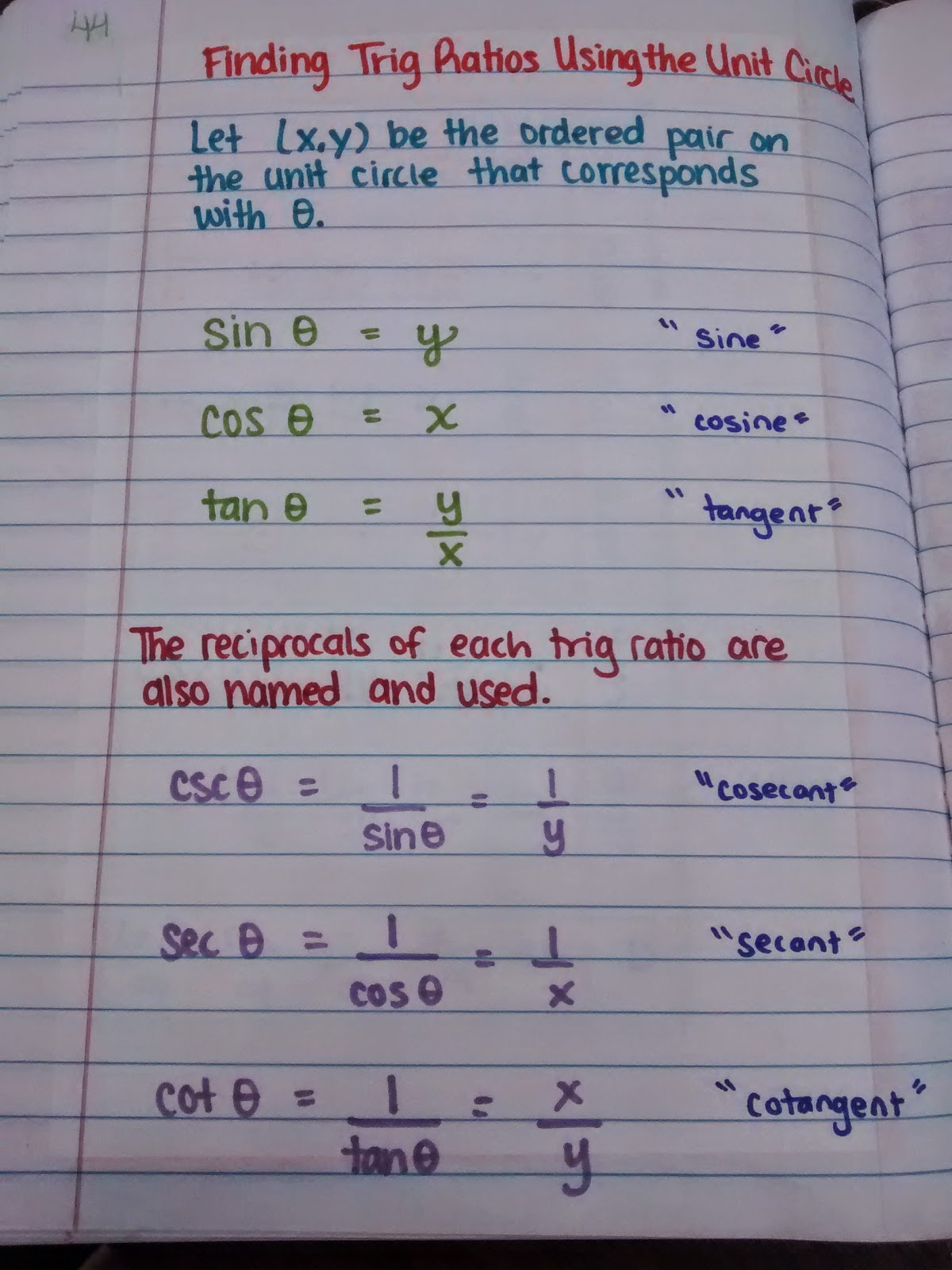
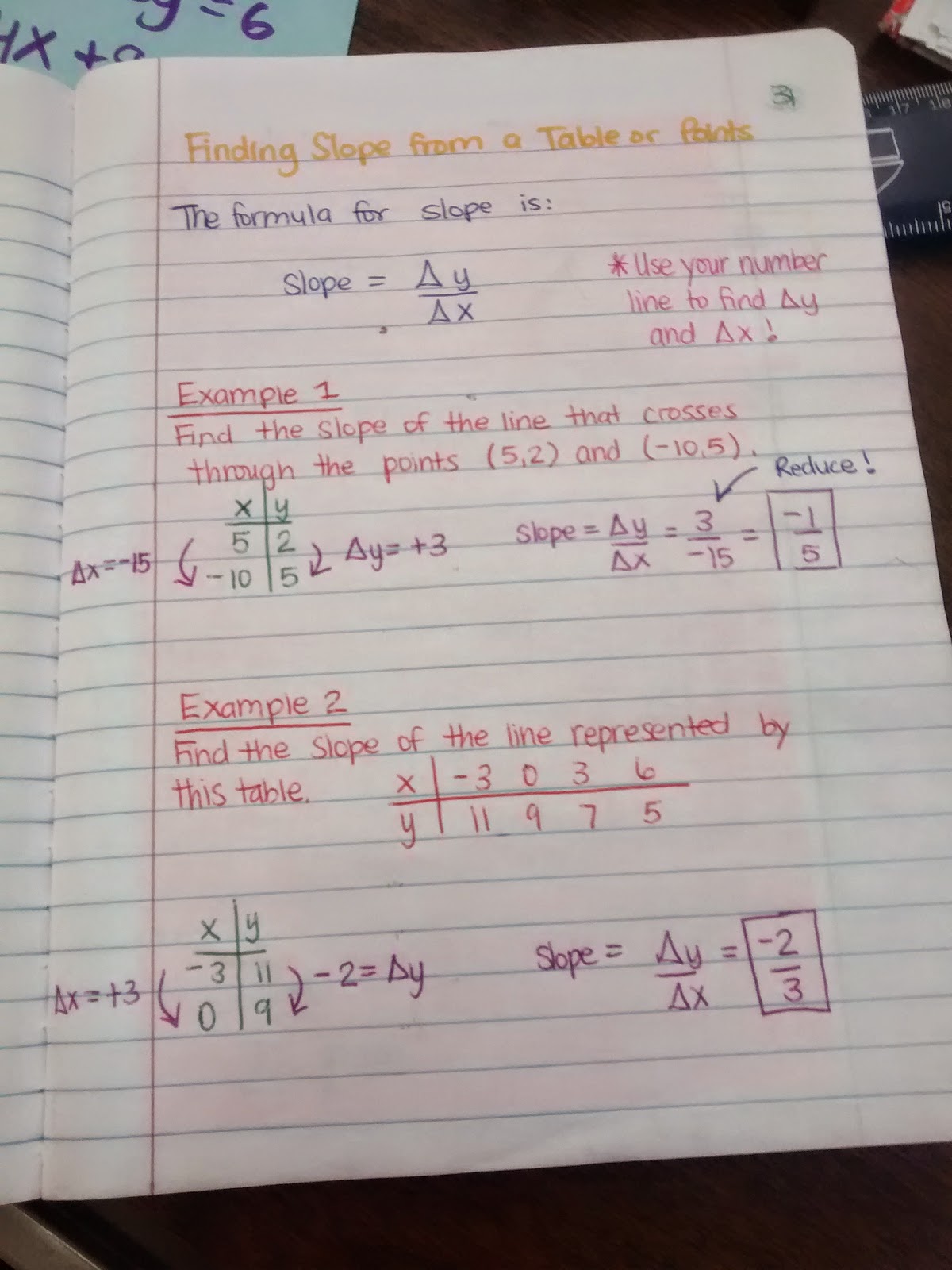
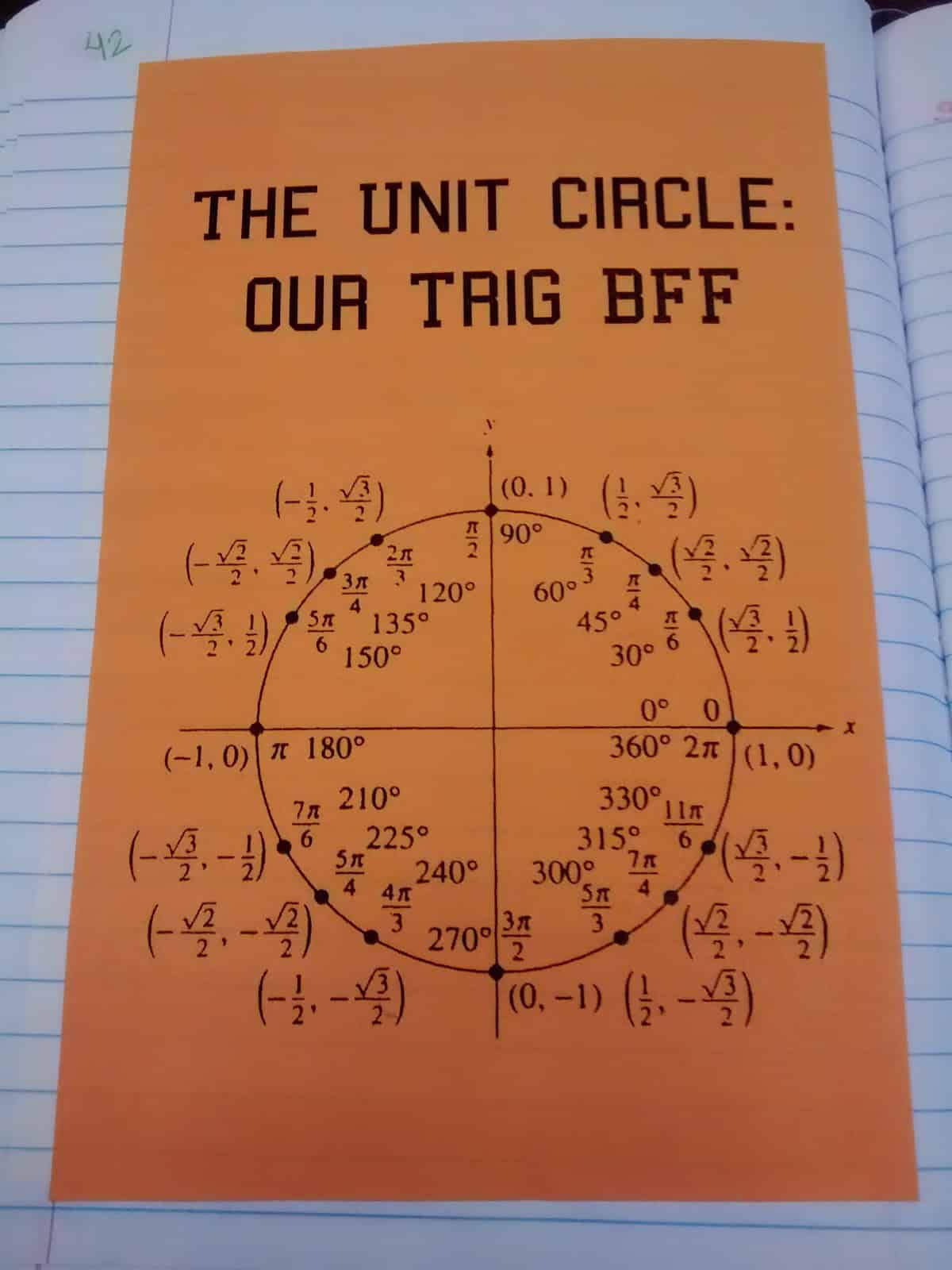

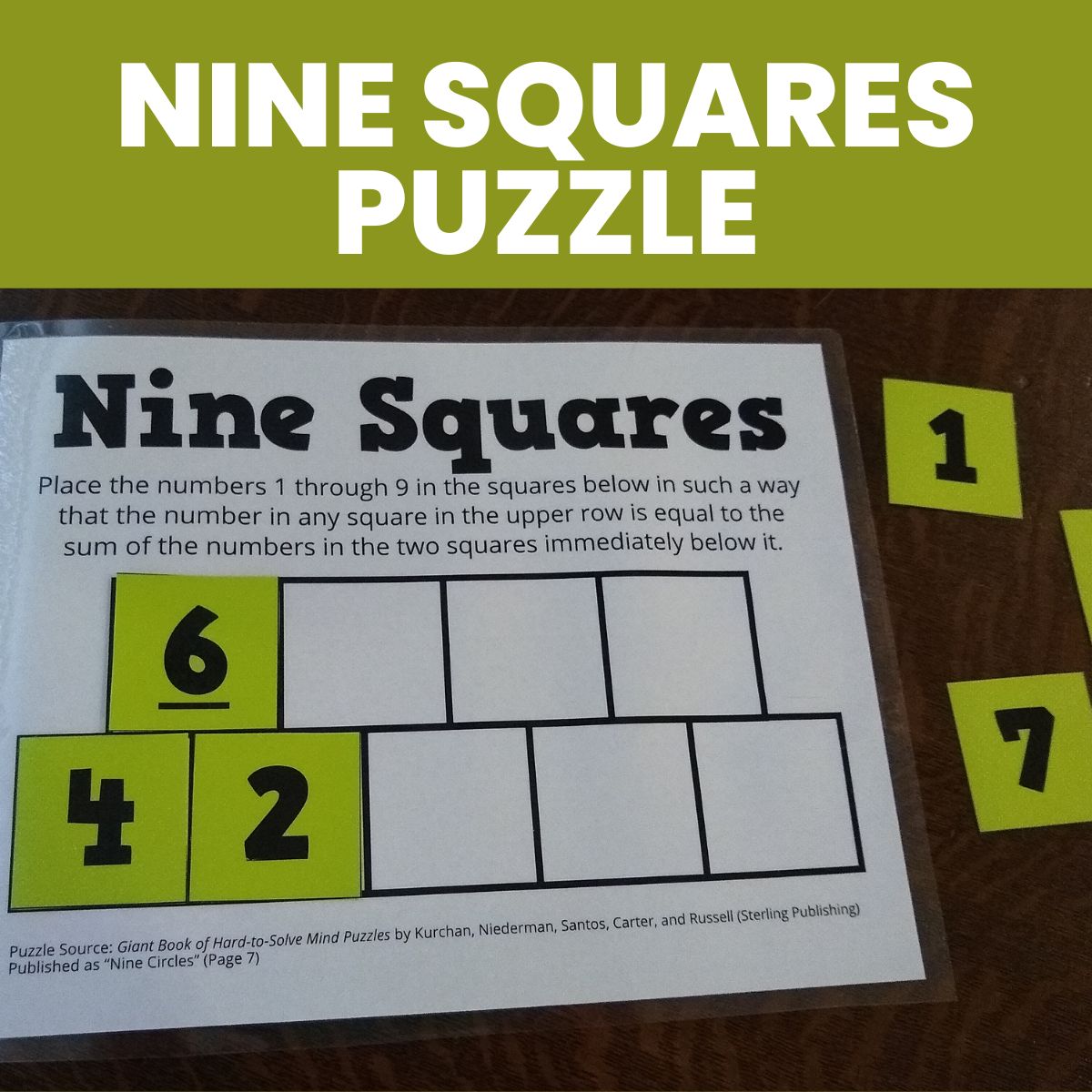
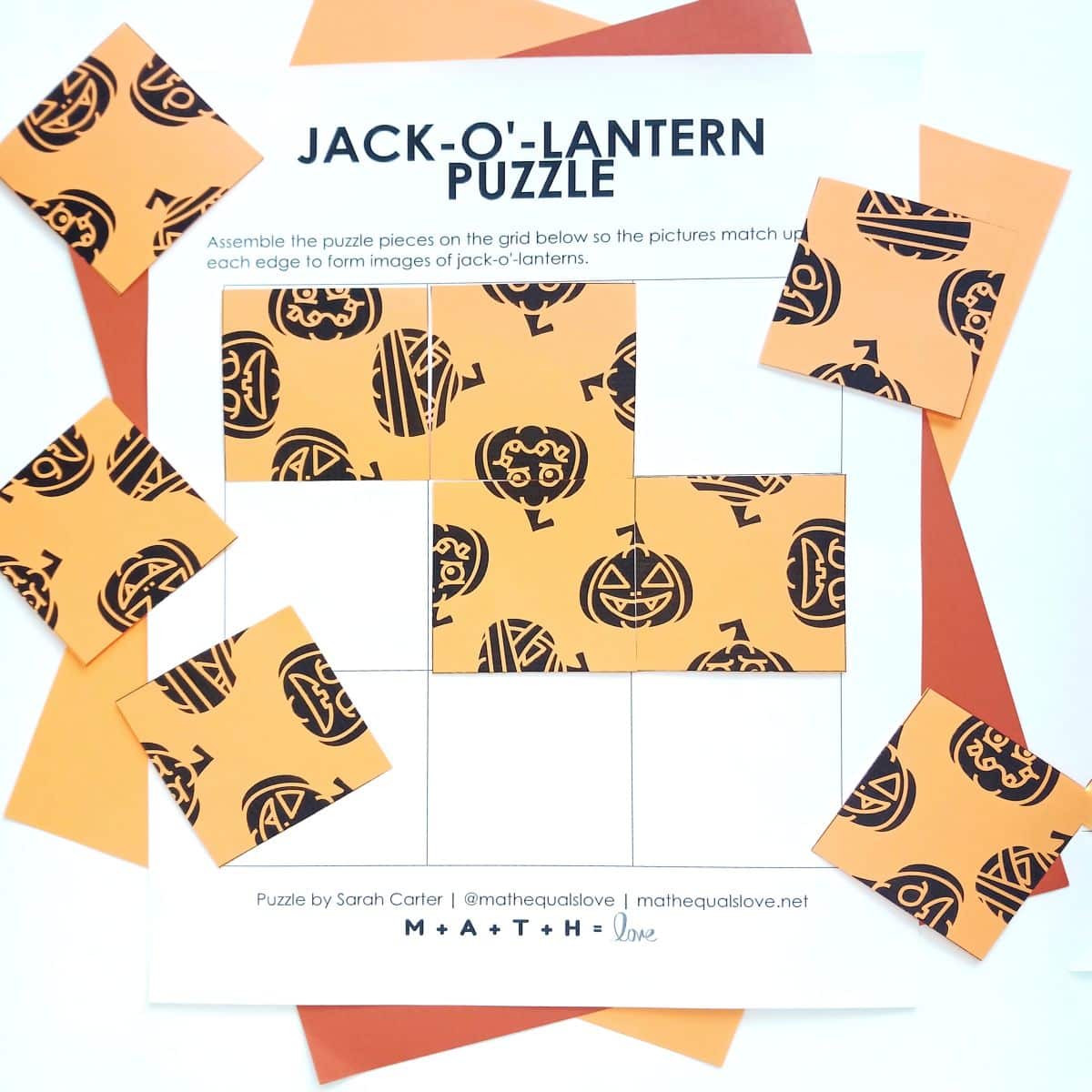
Thank you so much for sharing these activities! I've needed some small time fillers at the end of the period since we've finished state testing and are moving into review for finals. The kids LOVE these!
When they cover up – can they cover up the numbers on the die or the sum? I am confused how they would get a 1?
I’ m confused about the 1 as well. They can’t possibly get a one if using addition and yet in your examples they have one covered. Nice ideas though. Thanks.
If you roll an 8, you can cover up any numbers that add up to 8. So you could cover up 1 and 7. Hope this makes it clearer!